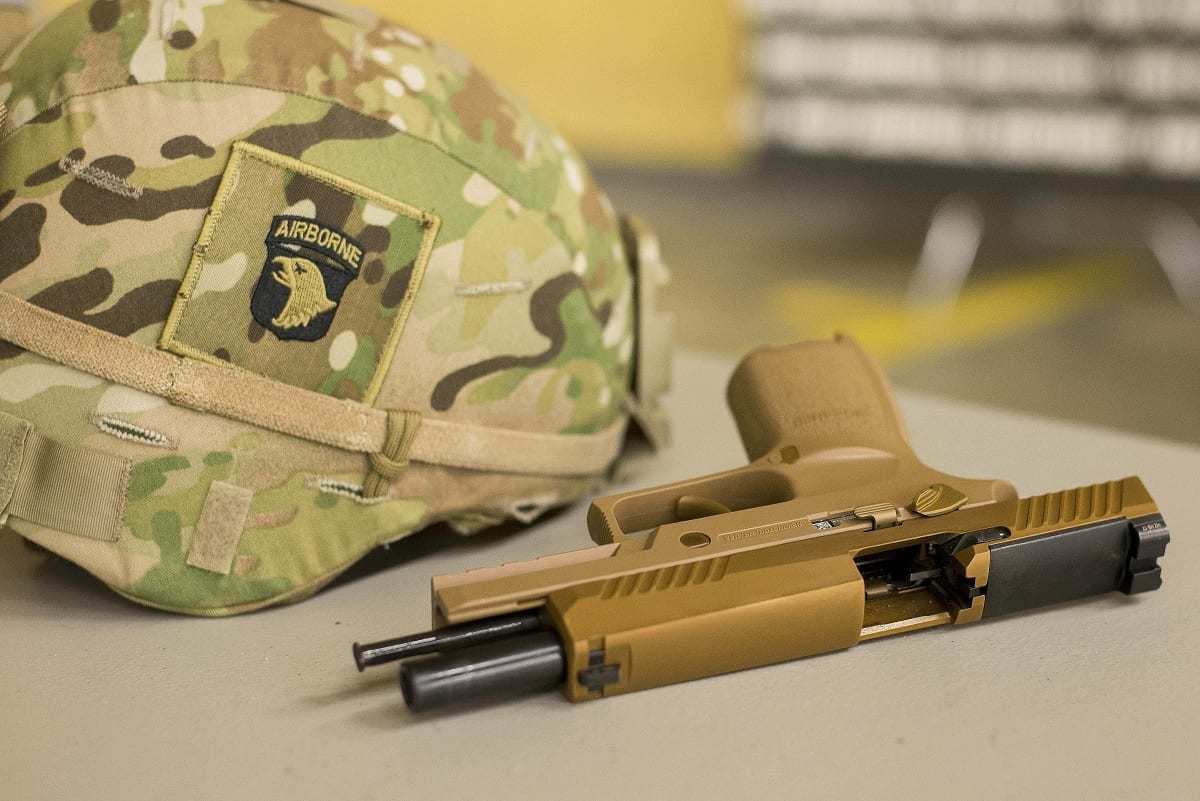It looks like the U.S. military has struck gold with the M17 Sig Sauer service pistol. The pistol taking over from the Beretta M9 appears to be well worth it for military personnel. The M17 replaced the M9 9-mm after Sig Sauer won a big contract from the Army in 2017. The M17 is smooth, easy to fire, looks great, has a nice polymer grip, and enjoys a light trigger pull. It has worked out so well for the Army that all service branches adopted it.
The M17 Brings A Lot to the Table
The M17 is an excellent choice for close-quarter combat. It’s almost the same model that civilians love – the Sig Sauer 320. In 2017, this pistol was picked through a competition among Beretta USA, FN America, and Glock. This was originally a $580 million Army contract for the M17 and the smaller and more compact M18. Looking for more stopping power? The Beretta M9 was criticized for not being powerful enough. The M17 9mm can use a punchy 147-grain jacket hollow point bullets. It has a standard 17-round magazine.
The M17 is your friend in a dark room if you have to clear buildings and your M4 is incapacitated or out of ammunition. The Sig pistol has self-illuminating sights for better target acquisition in low light. Military personnel can attach accessories on the integrated rail system on top of the barrel. Removable plates enable users to place a red dot optic on the gun.
The Sig Sauer Enables Quick Targeting
The Army originally wanted a pistol that had increased speed when targets came up quickly in small spaces – like hallways, attics, and balconies. The M17 exceeds all of these requirements. Soldiers and marines will have to get used to the thumb safety on the Sig. That safety was a requirement from the Army. Users claim better accuracy with the M17. It used to be some lower-ranking and junior personnel were not issued side-arms. The Army thankfully changed that policy and now gives soldiers a choice of carrying the M17.
The Sig Met the Army Requirements
The M9 has been criticized because it does not have a rail system, it isn’t modular, it’s more difficult to conceal, and the grip is too big. The M17 has answered the call and offered improvements to those complaints. Give Beretta credit though, its entry into the competition corrected all of those perceived flaws, but ultimately the Army and the rest of the military went with the Sig.
Sig Sauer entered a really good piece into the original Army competition and was rewarded handily. It’s going to provide hundreds of thousands of pistols in the coming years. The Army should be given credit for recognizing the weaknesses in the Beretta M9 and giving clear directions on what it wanted in the new model. It will be interesting to see if any service members are complaining about the Sig because it looks like it delivered an outstanding sidearm.
1945’s new Defense and National Security Editor, Brent M. Eastwood, PhD, is the author of Humans, Machines, and Data: Future Trends in Warfare. He is an Emerging Threats expert and former U.S. Army Infantry officer.

